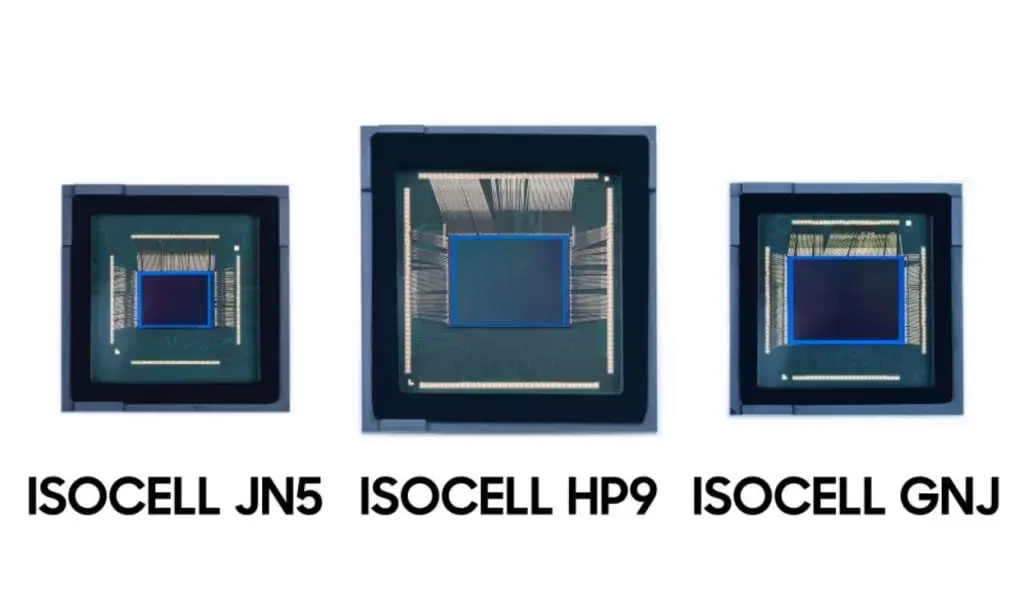Samsung has unveiled three new ISOCELL camera sensors: the ISOCELL GNJ, ISOCELL HP9, and ISOCELL JN5. While these sensors are not the flagship models, they are excellent choices for telephoto and ultrawide cameras in smartphones. Various Android smartphone manufacturers, including Samsung, are expected to adopt these sensors going forward.
ISOCELL GNJ
The ISOCELL GNJ features a 50MP sensor with 1µm pixels and a 1/1.57-inch optical format. It includes dual-pixel autofocus for quick and precise focusing, even in low-light conditions. The sensor also offers in-sensor zoom, which, when combined with an optical zoom lens, enhances zoom capabilities without significant loss in image quality.
To improve light collection and minimize unwanted reflections, the GNJ sensor is equipped with an enhanced anti-reflective layer and a high-refractive microlens. It utilizes silicon oxide between pixels to reduce noise. Additionally, it is energy-efficient, consuming 29% less power in preview mode and 34% less power during 4K 60fps video recording.
ISOCELL HP9
The ISOCELL HP9 is a 200MP sensor with a 1/1.4-inch optical format and 0.56µm pixels. Compared to the older ISOCELL HP3, it boasts 12% higher light sensitivity and 10% better autofocus. This sensor is suitable for both main and telephoto cameras and is already featured in the Vivo X100 Ultra’s telephoto camera.
This sensor employs a highly refractive microlens to direct light more effectively to the RGB color filter, enhancing color accuracy, autofocus speed, and light sensitivity. Its 4×4 pixel binning capability allows it to perform well in low-light conditions while creating a realistic background blur. It offers 2x and 4x in-sensor zoom and can achieve up to 12x optical-quality zoom with a 3x optical zoom lens.
ISOCELL JN5
The ISOCELL JN5 is a 50MP sensor with a 1/2.76-inch size, ideal for ultrawide cameras in smartphones. It delivers improved autofocus and a broader color range for a consistent camera experience. The sensor employs Dual Vertical Transfer Gate (Dual VTG) technology to enhance pixel charge transfer, minimizing noise in low-light conditions. Super Quad Phase Detection (Super QPD) improves autofocus accuracy by comparing horizontal and vertical phase differences.
The JN5 sensor utilizes Dual Slope Gain (DSG) for enhanced dynamic range and HDR, amplifying and converting light signals for a wider color gamut. It also features hardware remosaic algorithms for faster capture and real-time zoom preview. Its compact size makes it suitable for front-facing, telephoto, or ultrawide cameras.
Jesuk Lee, Executive Vice President and CTO of the System LSI Sensor Business Team at Samsung Electronics, commented, “Improving image sensor performance and making main and sub cameras work better together for a consistent photo experience is the new direction of the industry. We will keep setting industry standards and pushing technology boundaries with our new mobile sensors that include the latest advancements.”


Leave a Reply